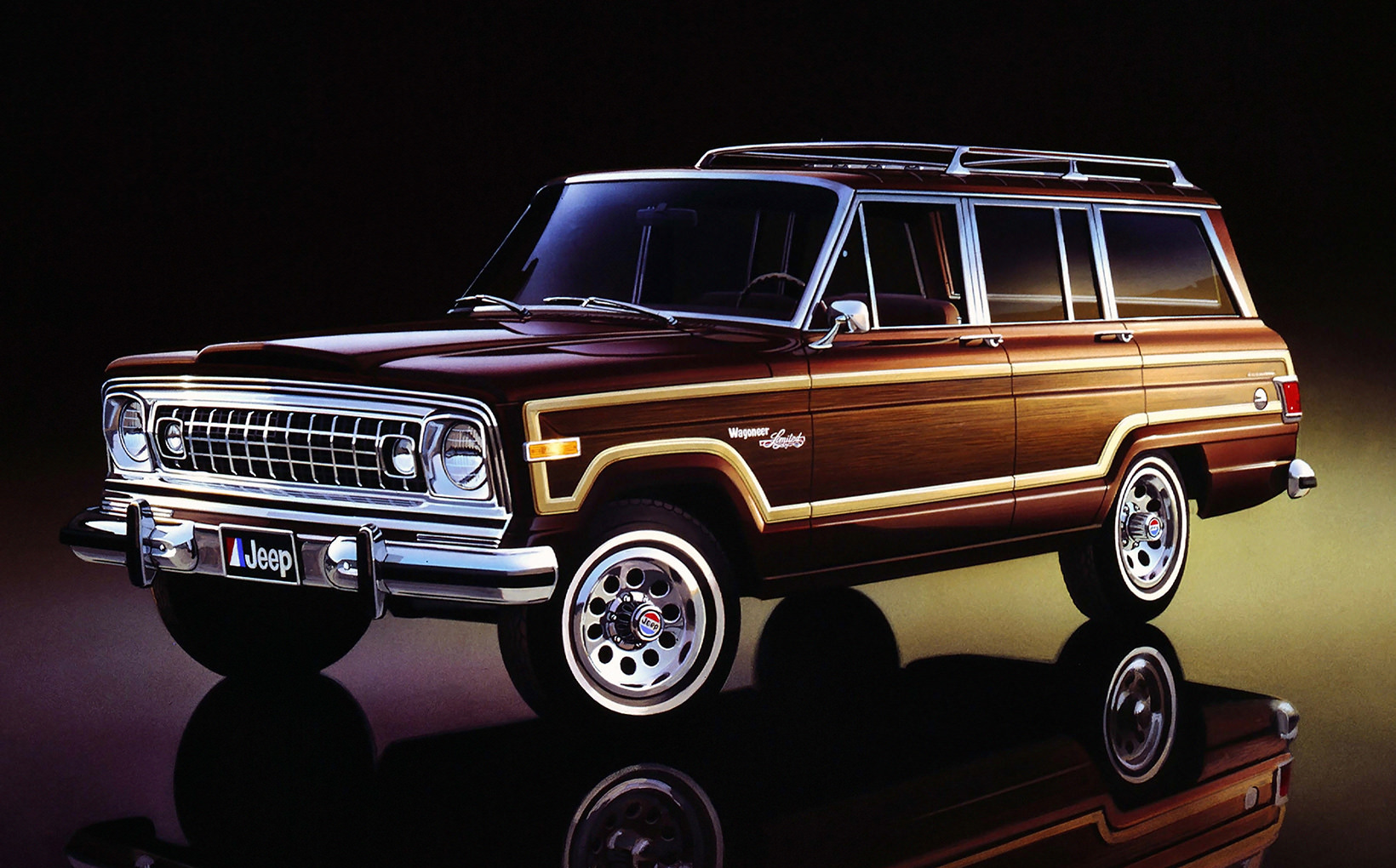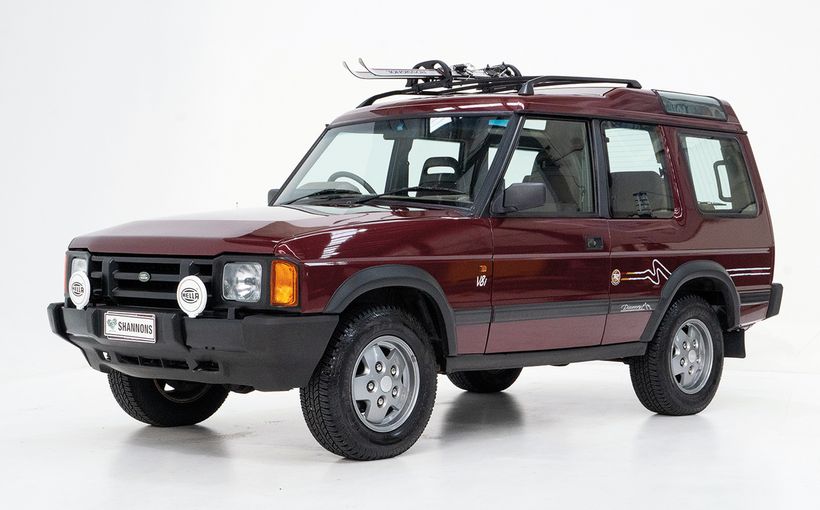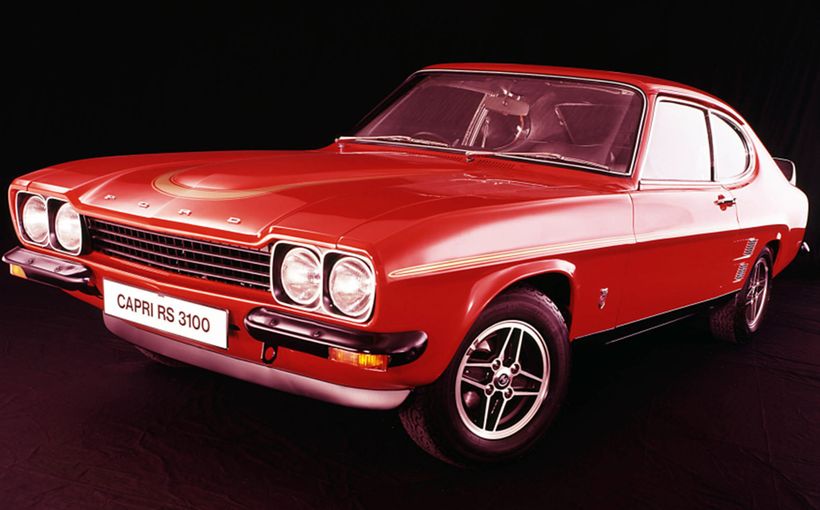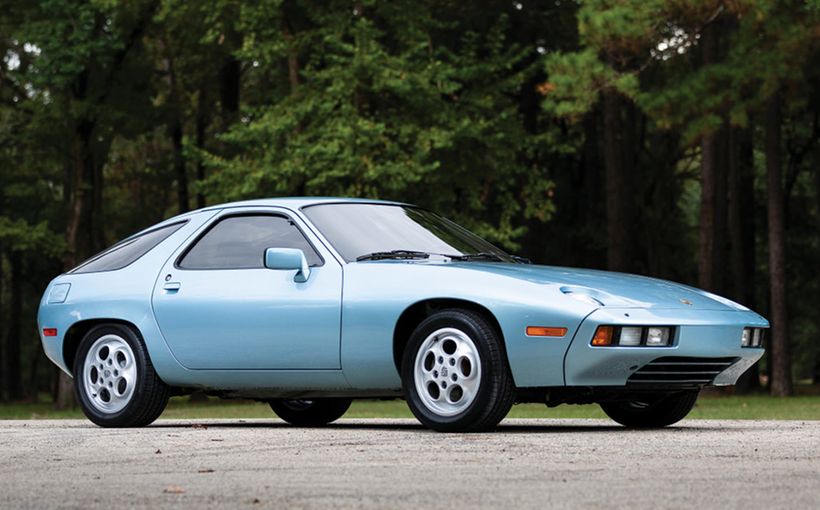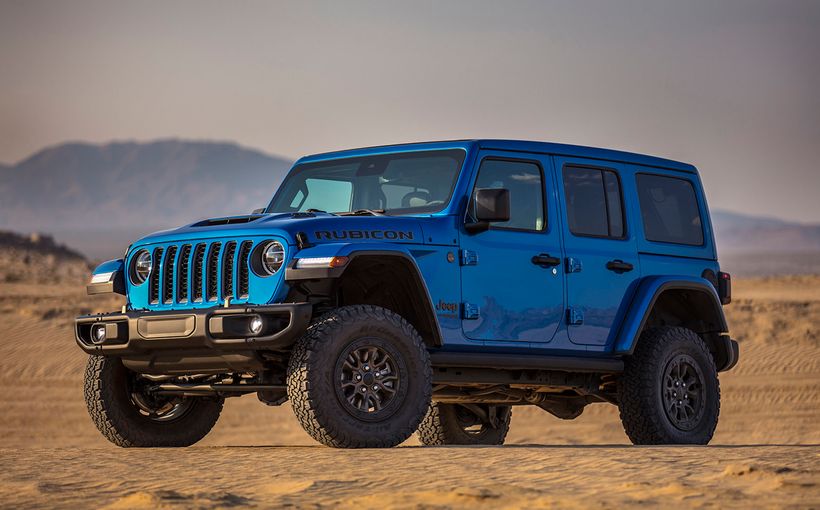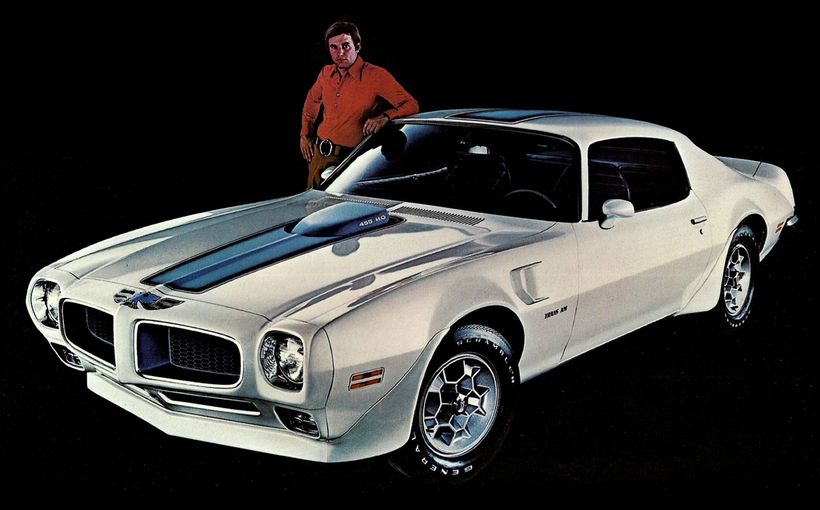Jeep Wagoneer: the world’s original luxury off-roader

“The automotive tastes of the rich start at the Cadillac and Lincoln level and escalate quickly to expensive European machinery. And once a big-bucks sedan and an exoticar are in the multi-car garage, the next choice is often an all-purpose, go-anywhere machine. The high-dollar vehicles of preference in this category are the Range Rover and the Jeep Grand Wagoneer,” wrote Car & Driver in a comparison test that followed the Range Rover’s official US launch in 1987.
That’s right. It took 17 years before the British-built Range Rover, launched to wide acclaim in its home market in 1970, officially went on sale in the world’s largest and most lucrative car market.
In terms of creating the world’s first mass-produced luxury off-roader, for which the Range Rover is often credited, the British were also playing catch-up, given that the US designed and manufactured Jeep Wagoneer was launched in 1963 – seven years before its UK equivalent.
And it took until 1981, more than a decade after its launch, for the Range Rover to offer a four-door variant which was 18 years after Jeep had pioneered that body type with its ground-breaking design. And it wasn't until 1982 that the Range Rover finally offered an automatic transmission - 19 years after the Wagoneer!

Image: https://en.wheelsage.org/land_rover/range_rover
The original SJ-series Wagoneer was so good that it remained in continuous production for almost three decades, under a succession of different owners, from 1963 to 1991. And during those 28 years its core body and chassis structure was fundamentally unchanged, making it one of the longest production runs for a single-generation model in US automotive history.
The Wagoneer was also one of Jeep’s most innovative models, given that it was the first Jeep to offer a four-door station wagon body, a V8 engine, 4WD with independent front suspension and 4WD with automatic transmission; the latter also a first for the US auto industry.
Not surprisingly, the original SJ-series Wagoneer, with its old-school charm and generations of childhood memories, has become a sought-after collector’s item in the US. Long before this famous model ceased production, there were already companies specialising in authentic restorations and values continue to rise.
The Wagoneer quickly evolved from a relatively spartan 4WD station wagon to an increasingly luxurious specification. As a result, the pioneering Super Wagoneer launched in 1966 created a new vehicle segment - the luxury 4WD or ‘Sport Utility Vehicle’ - which was destined to boom globally in decades to come.

Image: FCA
The Kaiser Jeep era (1963-1971)
Willys-Overland based in Toledo, Ohio is arguably best known for the hardy 4WD ‘Jeep’ (derived from the military acronym ‘GP’ for General Purpose) it produced in large numbers for the US military in WWII. After the war, it continued to produce Jeeps in various forms for civilian use, including the Willys Jeep Wagon which the Wagoneer would replace.
In 1953, Kaiser Motors and Willys-Overland joined forces in a manufacturing merger called Willys Motors, which would phase out Kaiser and Willys passenger car production to focus on development of Jeep and its unique offerings in the civilian market.
In 1963 Willys Motors was changed to Kaiser Jeep Corporation, which coincided with the launch of its Wagoneer. The company had correctly identified a burgeoning market for a comfortable go-anywhere wagon, aimed at middle-class American families wanting to explore new destinations beyond the reach of the nation’s new network of Interstate freeways.
At the time there were already high-riding 4WDs like the Town Wagon variant of the Dodge Power Wagon and International Harvester’s Travelall which offered this capability. However, compared to passenger cars, they looked like trucks and rode like them. They were also relatively basic, noisy, short on creature comforts, too tall for most home garages and generally not suitable for many families.
The innovative brilliance of the Wagoneer was a stylish and compact six-seater station wagon that looked like no other before it, that combined ride height, comfort and convenience similar to a passenger car with all-terrain capability. A truly versatile vehicle which American ‘moms’ were happy to drive, that could serve as both a family car during the week and escape machine on the weekend.
Bringing the Jeep Wagoneer to market consumed the then-sizeable sum of $20 million (about $180 million in today’s money) and more than three years of design and development. Completely new in virtually every aspect, Willys stated that the Wagoneer was “not a converted passenger car with a tailgate thrown in, nor a modified truck with windows. The all-new Jeep was conceived and designed as a wagon from its wheels to its reinforced roof.” It had no direct competitor.
The advanced styling concept was created by prolific industrial designer Brooks Stevens with elegantly simple, uncluttered lines that were fresh and modern with universal appeal.


Image: FCA
Stevens retained a strong visual connection with the iconic CJ-series civilian Jeep by incorporating its angular wheel housings and simple grille with vertical bars. The large windows and narrow roof pillars created a bright and airy glasshouse, the rear bench seat could be folded flat to increase luggage space and the side doors swung open to almost 90 degrees, which was wider than any station wagon on the market.
Built on a 110-inch/2794mm wheelbase with separate body and ladder-frame chassis, its overall length of less than 4.7 metres, width under 2.0 metres and 1.6 metres in height produced a compact vehicle by US standards that could comfortably fit inside most home garages. Base kerb weight was a hefty 1678kg.
The Wagoneer’s official designation was the J-100 series. There was also a J-200 series with 120-inch wheelbase and J-300 with even longer 126-inch wheelbase, but they were offered only as pick-up/tray body trucks under the Gladiator nameplate.
The relatively low height not only made rooftop-loading easier but also translated to an unusually low floor height for a 4WD vehicle, which allowed easy tailgate loading and occupant entry and exit. That was made possible by the compact transfer case and other drivetrain components being tucked up neatly between the chassis rails, to allow a lower ride height than traditional high-riding 4WDs.
The Wagoneer was initially available in base and Custom model grades plus four-door and two-door wagon body styles. The latter included a Panel Delivery option with windowless side panels and twin rear barn-doors replacing the side glass/single tailgate of the two-door wagon.
All Wagoneers were powered by Kaiser Jeep’s new ‘Tornado’ 230cid/3.8 litre inline six, featuring a single overhead camshaft, hemispherical combustion chambers and 140bhp (104kW) with good fuel economy. All models were equipped with 11-inch drum brakes but buyers had a choice of manual gearbox or the unprecedented luxury of automatic transmission. There was also a choice of 2WD or part-time, dual-range 4WD and both offered unusually quiet 2WD operation due to the new transfer case design.
Early Wagoneers also broke new ground in offering optional torsion-bar IFS with both drivetrains, to create more car-like ride and handling than the traditional leaf-spring solid front axle. While this was easily achieved in rear-wheel drive models by using a chassis-mounted central pivot for the lower front suspension arms, the 4WD variants shared the same pivot point but used a unique Dana 27 axle assembly with a central CV joint. This allowed the axle housings on each side to double as lower suspension arms, with the differential unit swinging with the kerb-side half of the axle.

Image: FCA
In 1964 came the desirable option of factory-fitted air conditioning which with automatic transmission and other creature comforts was meeting growing customer demand for more passenger car standards of comfort and features.
The same year Kaiser Jeep offered a low-compression version of the Tornado six, with slightly less power (133bhp/99kW) but better fuel economy and elimination of higher engine temps and pre-ignition experienced by owners living in high-altitude environments.
In 1965 consumer advocate Ralph Nader published his stinging critique of the US automotive industry Unsafe at Any Speed which perhaps prompted increased emphasis on occupant safety in the Wagoneer including standard front and rear seatbelts, safety-padded dash, high impact windscreen, dual-circuit braking system and more.
There were big changes on the engine front during 1965, with the standard Tornado SOHC six replaced by the ‘Hi-Torque’ 232cid/3.8 litre pushrod OHV inline six, plus the Wagoneer’s (and Jeep’s) first V8 engine option in the form of a ‘Vigilante’ 327cid/5.4 litre V8 rated at 250bhp (186kW) and 340ft/lbs (461Nm).
Both of these engines were outsourced from American Motors Corporation (AMC) which was destined to play a much larger role in Jeep history. A three-speed manual transmission was standard for the V8 but Jeep also offered GM’s excellent Turbo Hydra-Matic as an option.
In response to customer demand, it was inevitable that Kaiser Jeep released the luxurious Super Wagoneer variant in 1966 wearing the Wagoneer’s new full-width metal grille design. The company described it as “a new dimension in motoring” as it not only established a formidable benchmark for 4WD luxury but also a whole new category of vehicle.


Image: FCA
The Super Wagoneer came standard with an exclusive 270bhp (201kW) four-barrel version of the 327 AMC V8 and Turbo Hydra-Matic with console shift. There was also lavish body and tailgate trim with “antiqued gold” inserts, front fender ornaments, whitewall tyres and mag-style wheel-covers with simulated knock-off hubs, sumptuous interior with front bucket seats, plush carpet, woodgrain and chrome accents, padded vinyl roof, chrome roof rack, power brakes, power steering, power tailgate, air-conditioning, courtesy lights, tinted safety glass, tilt-adjustable steering wheel and lots more. Jeep proudly claimed the Super Wagoneer was “the most elegant 4-wheeler auto ever crafted” without a hint of exaggeration.
A new Custom four-door model with V8 was added in 1968 to slot between the base Wagoneer and Super Wagoneer and for 1969 the premium 327 AMC V8 was replaced by the ‘Dauntless’ 350cid/5.7 litre V8 outsourced from Buick. This new engine was standard in the Super Wagoneer.
With 230bhp (172kW) and 350ft/lbs (461Nm), it had slightly less power than its predecessor but more torque at lower rpm, which was more desirable given that many Wagoneers were relied on for heavy towing of caravans, boats and horse-floats.
By 1969 the slower-selling two-door body style was dropped, along with the 2WD option which had always been outsold by 4WD models. As a result, all Wagoneers from then on were equipped with leaf springs and rigid live axles front and rear tuned for a smooth ride quality.
After four years in production the Super Wagoneer was also phased out during 1969, with the well-equipped and more moderately priced Wagoneer Custom becoming the premium choice. The last Wagoneer produced under Kaiser management was the 1970 model, with its distinctive new ‘egg-grate’ grille and fender-mounted side lights.

Image: FCA
The AMC era (1971-1987)
In early 1970 the Kaiser Jeep Corporation was renamed Jeep Corporation following a buy-out by American Motors Corporation, which made Jeep a standalone division of AMC.
The 1971 model year ushered in a larger and more powerful 258cid/4.2 litre inline six as the standard Wagoneer engine and buyers also had a choice of two lusty AMC V8s, in either 304cid/5.0 litre and premium 360cid/5.9 litre displacements. The 360 was rated at 245bhp (183kW) with a bountiful 365ft/lbs (495Nm) of towing torque.
The first use of simulated woodgrain side panels on the Wagoneer also occurred in 1971, as part of a special edition X-code promotional model finished in distinctive Golden Lime paint. This woodgrain effect would become more prominent over time; Wagoneer buyers warmed to its nostalgic charm, as it reminded many of America’s classic ‘woody’ wagons of the past.
1973 was a big year for Jeep with the introduction of its innovative Quadra-Trac full-time 4WD system developed by Borg Warner. At launch Jeep claimed that “the Quadra-Trac system, which has been under development for more than four years, represents an advance which is as significant to the four-wheel drive vehicle as the first automatic transmission was to the automobile…the revolution in four-wheel drive begins.”

Image: FCA
Although commonplace now, permanent all-wheel drive was ground-breaking in 1973. It employed a central LSD that continuously varied the amount of engine torque shared between the front and rear axles to maximise traction and therefore improve grip, handling and dynamic safety. For serious off-roading, the third diff could be locked and the option of 2.57:1 ratio low-range reduction was also available.
Quadra-Trac was quieter than conventional part-time 4WD systems, reduced tyre wear and eliminated the need to manually engage the transfer case and (if fitted) front freewheeling hubs when venturing off-road. This all-terrain convenience broadened the appeal of the Jeep brand, given that you could literally drive off the bitumen into the backwoods without having to change a thing. The 304 V8 was not offered in 1973, with the 360 now available in two power ratings.
The Wagoneer was given another fresh look for 1974 with a bold new grille design and other enhancements. Despite being in the midst of the world’s first oil crisis, six-cylinder engines and manual transmissions were dropped, with the base engine now a two-barrel 360 V8 with an optional four-barrel 360 and new monster four-barrel 401cid/6.6 litre V8. All used the Turbo Hydra-Matic with Quadra-Trac and the wheelbase was reduced to 109-inches from the original 110 due to a new Dana front axle assembly.
Even with the advent of Quadra-Trac, the Wagoneer was still perceived as a ‘family’ SUV, which had limited appeal for younger buyers wanting something with a sportier image and lower price. So, in 1974 Jeep went back to the future by dusting off the two-door Wagoneer which had been discontinued in 1969 and revamping it. With a redesigned glasshouse featuring long rear-side windows and thicker D-pillars, it was successfully relaunched as the Jeep Cherokee.

Image: FCA
Available in base and S (for Sport) model grades, the Cherokee did not share the Wagoneer’s new grille design, instead adopting the same slotted metal grille used by J-Series trucks since 1970.
It also had vertical taillights rather than the Wagoneer’s wrap-around units. Standard Cherokee equipment included front bucket seats with a folding rear bench seat, colour-keyed vinyl floor covering, wind-up tailgate window and more.
Standard engine was a 258cid/4.2 litre inline six with three-speed manual and part time dual-range 4WD. The base 360 V8 and automatic transmission could also be optioned with this drivetrain, while Quadra-Trac was available with the same trio of V8 auto options shared with the Wagoneer.
For 1975 Wagoneer and Cherokee engines gained electronic ignition and there were numerous other upgrades and refinements across the fleet, including more expansive woodgrain panelling on the top-shelf Custom Wagoneer.
Boosting the already popular Cherokee for 1975 was the tougher-looking Cherokee Chief option with wide-track front and rear axles, unique 15 x 10-inch slotted steel wheels and beefy Goodyear Tracker A/T tyres, which required larger wheel wells and new fender flares to shroud them. The Chief also had distinctive body decals and unique interior trim.

Image: FCA
The most significant change for 1976 was a tougher ladder-chassis frame for Wagoneer and Cherokee featuring box-section side rails and stronger cross-members, plus upgraded suspension and steering components and a new four-door option for Cherokee buyers.
The popularity of the lower-priced, more utilitarian Cherokee, combined with strong demand for increased luxury during the 1970s recreational vehicle boom, prompted Jeep to revisit its Super Wagoneer concept of the 1960s with the return of an overtly upmarket version.
The new Wagoneer Limited released in 1978 was claimed by Jeep to be “a cut above excellence…built for the man who demands the ultimate in four-wheel drive performance without compromising on luxury.”
The Limited was even more luxurious and lavishly equipped than its ancestor, with premium pricing that put it firmly in Cadillac territory. Even so, it sold strongly and no doubt attracted a new clientele of prestige car buyers who would not have previously considered a Jeep.
The following year Wagoneers and Cherokees were given styling upgrades, most noticeably lighter polished aluminium bumpers and distinctive new grille designs with both incorporating rectangular headlights.
The world’s second global oil crisis in a decade brought renewed emphasis on fuel economy and sliding sales of gas-guzzling V8s. This eliminated the big 401 and four-barrel 360 V8 options, with the Wagoneer available only with the two-barrel 360 V8 which doubled as the only V8 option for Cherokee buyers.

Image: FCA
1980 introduced a new part-time, dual-range transfer case compatible with either a new Tremec four-speed manual or Chrysler-sourced Torqueflite auto. This was the first time in seven years that Jeep offered Wagoneers buyers an alternative to Quadra-Trac, with better fuel economy being the prime motivator.
The Wagoneer line-up expanded to three models in 1981, with a new mid-grade offering called Brougham. The two-barrel 360 V8 became optional for 1981, with a new lighter version of the 258 inline six replacing it as the standard engine. This was the right move for a US market still spooked by oil shocks, delivering lower running and maintenance costs.
1983 introduced Jeep’s new Selec-Trac system which unlike Quadra-Trac added a 2WD-only mode to enhance fuel economy. The Brougham mid-grade model also proved popular enough for the base model Custom to be discontinued.
In 1984 Jeep Corporation introduced its all-new XJ series with more compact and fuel-efficient unitary body versions of the Wagoneer/Wagoneer Limited and Cherokee. Although this was the end of the line for the SJ-series Cherokee, healthy demand from SJ Wagoneer loyalists and Jeep’s proud claim that it was the “Grand Daddy in four-wheel drive” ensured its survival.
However, with the need to streamline its manufacturing process, the base model SJ-series Brougham Wagoneer was dropped and the sole-remaining Limited was renamed Grand Wagoneer. Improvements to this iconic model continued until 1987 – the last year of Jeep Corporation under AMC ownership.

Image: FCA
The Chrysler era (1987-1991)
With Chrysler Corporation’s buy-out of AMC in March 1987, the SJ Wagoneer remained in production because of stubbornly strong customer demand and healthy profits made on each unit sold.
Although Chrysler did not make any major changes, the 1989 to 1991 model years are considered to be the best of all ‘classic’ Wagoneers due to numerous refinements made as running changes during that period.
However, there was also a global oil price shock in 1990 triggered by Iraq’s invasion of Kuwait. That was followed by the liberation of Kuwait in the 1991 Gulf War, which kept petrol prices high and ensured plummeting sales for large SUVs like the Grand Wagoneer. Combined with the looming introduction of tougher US vehicle safety standards, its demise was inevitable.
In early 1991 Chrysler confirmed the end of Grand Wagoneer production, which left Jeep without a full-size SUV for the first time since 1963. The last SJ-series Grand Wagoneer left Chrysler’s Toledo assembly plant in June 1991.

Image: FCA
2022 return of the Wagoneer and Grand Wagoneer
The demise of the ‘classic’ SJ Grand Wagoneer in 1991 also saw discontinuation of the XJ Wagoneer and Wagoneer Limited the following year, in readiness for the new ZJ Jeep platform in 1993. The launch of the new model featured a one-year reprisal of the Grand Wagoneer, powered by a Magnum 5.2 litre V8 with signature woodgrain side panelling and loaded with luxury appointments.
Almost three decades later, Jeep’s iconic Wagoneer and Grand Wagoneer nameplates have been revived for the 2022 US model year. Based on a new super luxurious seven-seater SUV with imposing dimensions, it’s designed to compete with numerous rivals that did not exist when the original Wagoneer appeared in 1963.
With sturdy body-on-frame underpinnings from the RAM 1500 pickup, including its potent 5.7 litre Hemi V8, the reborn Wagoneer/Grand Wagoneer offer a choice of Quadra-Trac drivetrains, optional air suspension, massive 4.5 tonne towing capacity and every conceivable luxury. However, with LHD-only production, markets including Australia miss out.
Even so, these reborn models are a modern-day recognition of the innovative all-terrain family wagon that laid the foundation for today’s highly competitive luxury SUV segment. That segment, of course, includes the venerable Range Rover which although remaining in production since its launch in 1970 is not the world’s first mass-produced luxury off-roader.

